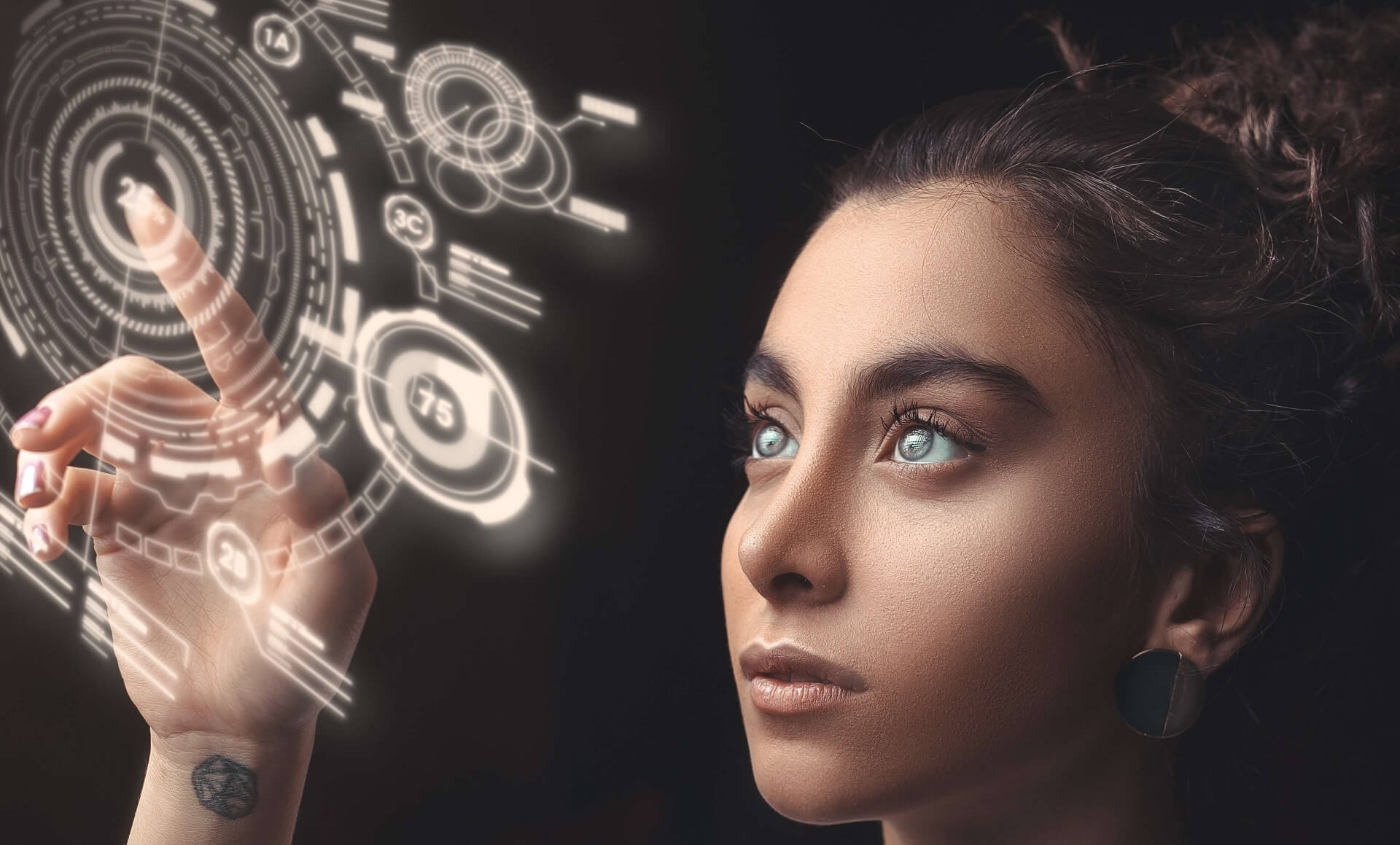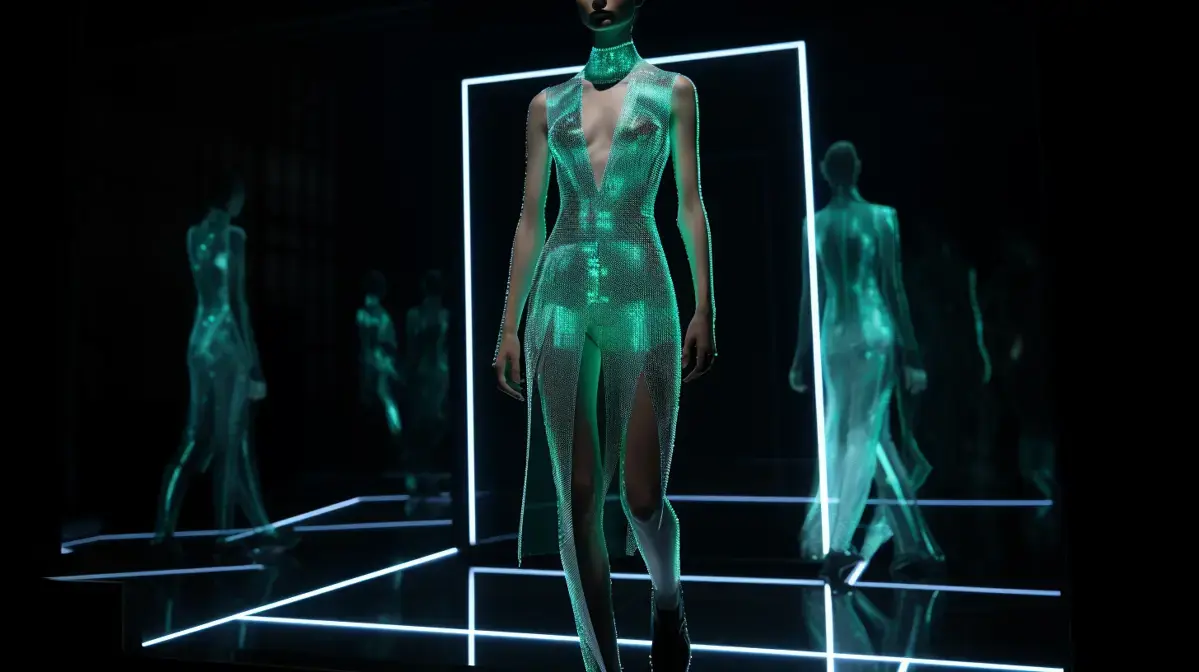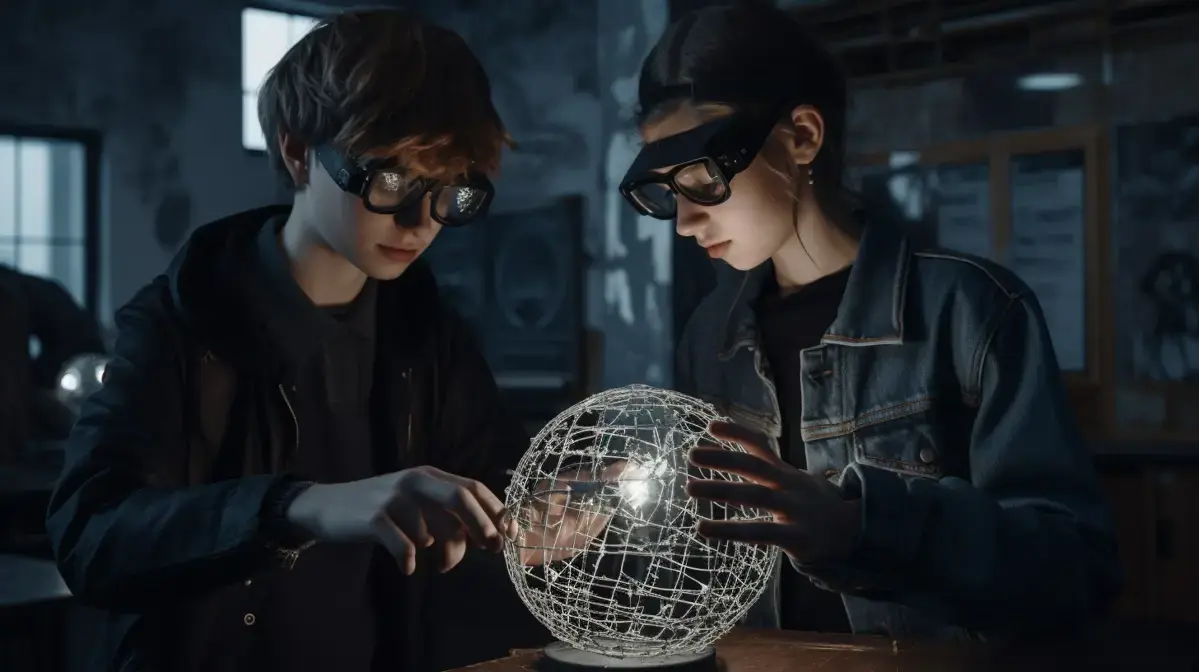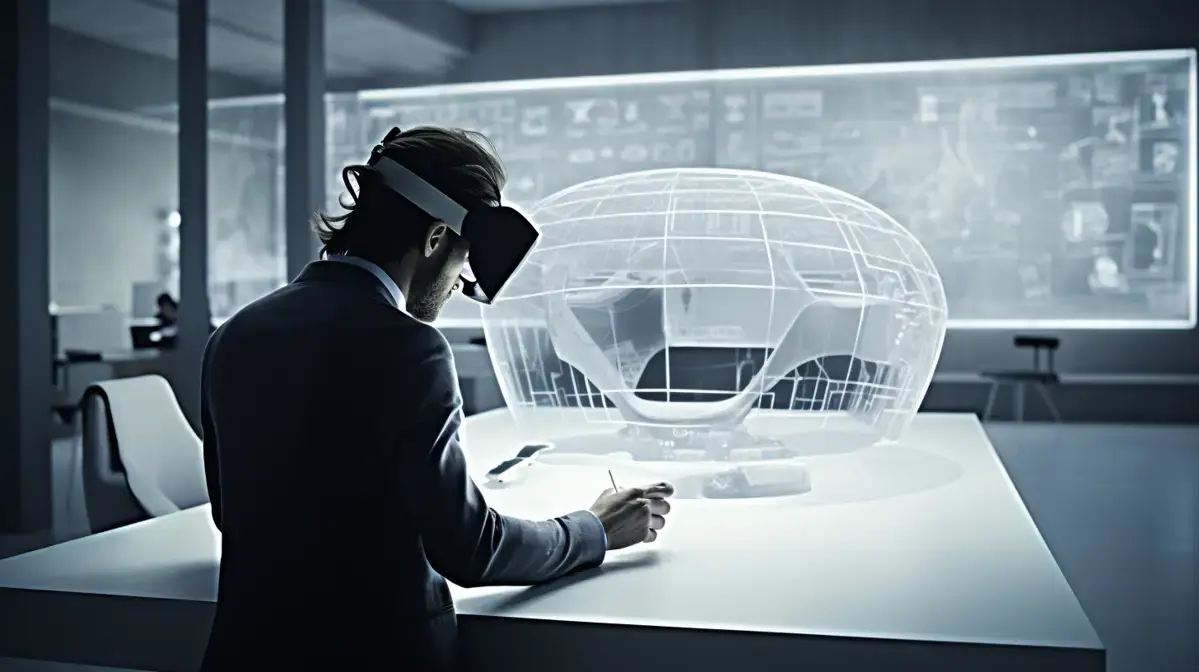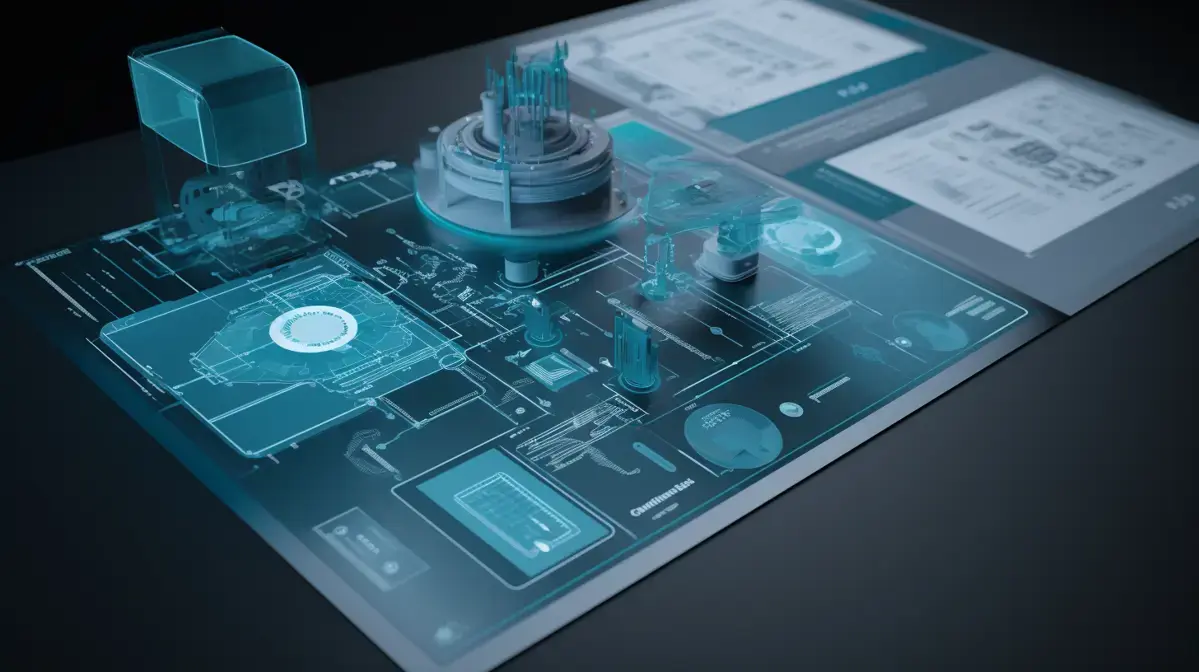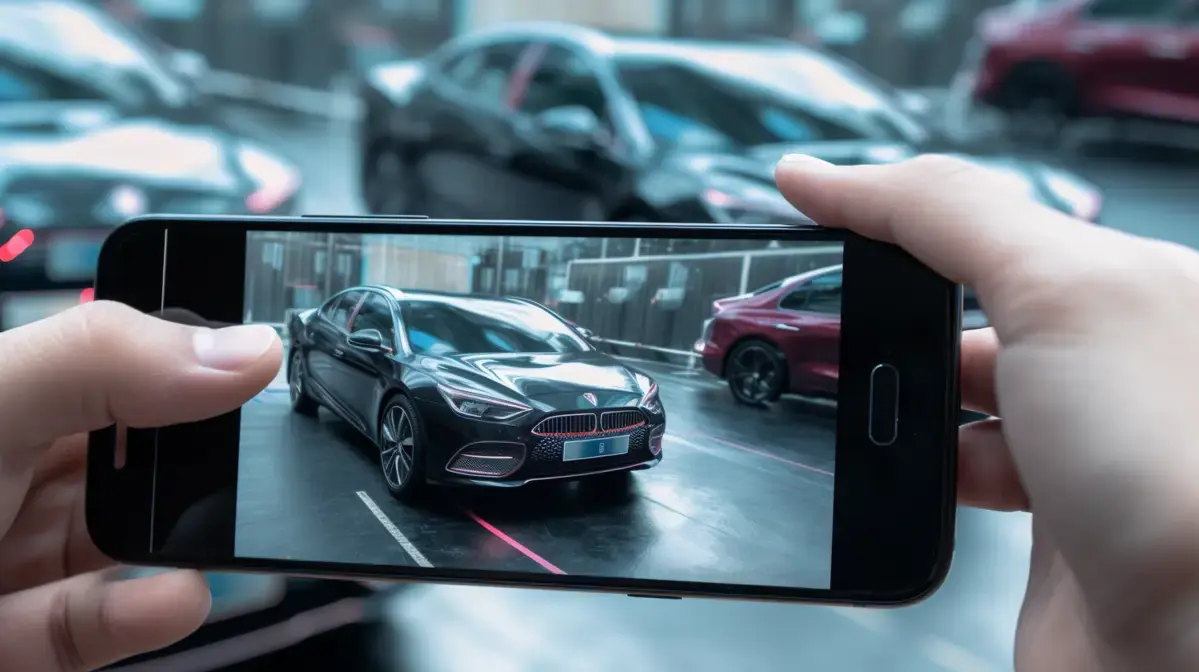Augmented Reality (AR) technology is revolutionizing the field of architecture, allowing designers to create immersive 3D models that users can interact with in real-time. This technology allows architects to visualize their designs more accurately and make changes on the fly, reducing errors and saving time.
AR enables viewers to experience a realistic representation of buildings- from walking around rooms to inspecting individual elements like walls or windows. By using AR headsets such as HoloLens or Magic Leap One, architects can immerse themselves in virtual environments where they have complete control over every aspect of the design.
With AR, even non-technical stakeholders can understand complex architectural plans through interactive visualization. Clients and investors are able to experience properties before construction starts; helping them better imagine how it will look upon completion while also reducing misunderstandings between architect & client.
A significant advantage for utilizing AR within architecture is being able visualize data patterns about proposed structures – lighting analysis or structural stress-tests that would be difficult via traditional means
More than enhancing visualization skills augmented reality presents an opportunity for new business models too. For instance some firms utilize Augmented Reality during building inspections by overlaying technical details onto actual structures; simplifying visual comprehensions which reduces human error rates thus increasing safety measures significantly
Table Of Contents
- Key Points
- Introduction to Augmented Reality and its Role in Architecture
- Advantages of Using Augmented Reality for Architectural Modeling
- How Augmented Reality Works in Creating Interactive Architectural Models
- Interesting Facts
- Tools Needed for Implementing Augmented Reality in Architectural Projects
- Examples of Successful Implementation of Augmented Reality in Architecture
- The Future of Using Augmented Reality for Architectural Modeling
- FAQs
- Challenges Faced When Integrating Augmented Reality into the Design Process
- Limitations and Constraints with Current Use of Augmented Reality Technology
- The Potential Impact of Using Augmented reality on the Construction Industry
- Key Takeaways

Key Points
- Augmented reality provides a more interactive and immersive experience for users.
- Architectural models created using augmented reality can be easily modified and adjusted in real time.
- The use of augmented reality can lead to more efficient communication between architects, clients, and other stakeholders involved in the project.
- Augmented reality allows for better visualization of projects before construction begins, helping to identify potential issues early on in the design process.
Introduction to Augmented Reality and its Role in Architecture
Augmented Reality (AR) technology has been growing in popularity across many industries, and architecture is no exception.
Imagine walking through a city with your phone or tablet in hand, pointing it at different buildings while seeing digital overlays of proposed changes. This is just one example of how AR can be used in architecture – allowing architects and designers to see their creations come to life before even breaking ground on a project.
But it’s not just about visualizing designs; AR can also help with problem-solving during construction phases. For instance, if there are issues that arise during building development that aren’t immediately apparent until later stages or after completion – such as structural problems – augmented reality could allow builders to overlay accurate representations of those structures onto real-world situations so they can assess whether changes need to be made sooner rather than later.
Furthermore, imagine being able walk around inside complex spaces like offices where you don’t know which direction leads where? Using navigation markers overlaid onto surfaces via AR allows for easy guidance without any disorientation whatsoever.
AR is ultimately changing the game when it comes down creating innovative architectural designs by implementing intuitive new ways of approaching projects from concept all the way up construction phases. Often referred too as ‘the fourth dimension’; Imagine standing next 3D printed models but being able to see every aspect imaginable on them through sensory immersion techniques using virtual environments displayable by devices such as head-mounted displays.
Advantages of Using Augmented Reality for Architectural Modeling
Augmented Reality (AR) is a technology that has been gaining popularity in recent years. It allows you to superimpose digital information onto the real world, creating an interactive and immersive experience. In architecture, AR can bring designs to life and provide clients with a better understanding of what their building will look like before it’s even built.
As an expert in AR, I have seen firsthand how this technology can transform the way we design and build structures. One of my favorite examples is using AR to visualize interior spaces. With just a smartphone or tablet app, you can see how furniture will fit into your space before making any purchases or hiring contractors.
Another exciting application of AR in architecture is for site analysis. By overlaying data on top of physical locations, architects are able to assess factors such as sunlight exposure and wind patterns more accurately than ever before. This allows designers to create more efficient buildings that take advantage of natural resources while minimizing negative impacts on the environment.
Augmented Reality offers endless possibilities for enhancing architectural design processes by providing visual representations that enable stakeholders to make informed decisions about projects even before they commence construction work. Leveraging this cutting-edge tool creates realistic 3D models overlaid onto existing environments, allowing users to interact with building plans directly. Whether you’re an architect looking for new ways to showcase your visions or simply interested in exploring new technologies available, Augmented Reality provides solutions beyond traditional methods, making it worth considering when designing buildings today.
How Augmented Reality Works in Creating Interactive Architectural Models
Augmented reality (AR) has revolutionized the world of architecture, allowing designers to create immersive experiences for clients and stakeholders. The use of AR technology in the field of architecture is not only becoming increasingly popular but also essential for keeping up with innovation trends.
AR plays a significant role during design development by providing architects with accurate virtual representations that enable them to visualize their final product and make necessary adjustments beforehand. For instance, clients can take virtual tours inside buildings before construction begins or see how proposed modifications would look on existing structures through visual overlays made possible by AR.
In summary, Augmented Reality Technology proves beneficial for creating efficient building plans; hence its application continues gaining momentum worldwide as new innovations are introduced daily.
Interesting Facts
- The term “augmented reality” was first coined in 1990 by researcher Tom Caudell.
- Augmented reality has been used in the gaming industry for years, but it is now being explored and adopted by various industries including architecture to create interactive models.
- Augmented reality technology can be used to overlay digital information onto physical objects or real-world environments, making it possible for architects and designers to visualize and interact with their designs before they are built.
- In addition to improving visualization, augmented reality can also help teams collaborate remotely on a design project. Using AR-enabled devices like smart glasses or tablets allows team members from different locations around the world to view and manipulate architectural models as if they were physically present together.

Tools Needed for Implementing Augmented Reality in Architectural Projects
Augmented reality (AR) has been taking the world by storm in recent years, and it’s no surprise why. This technology allows users to overlay digital information onto their physical surroundings, creating a mixed-reality experience that can be both informative and entertaining. One area where AR is making a significant impact is in architecture.
By using AR tools such as HoloLens or Magic Leap glasses, architects are able to visualize their designs at full scale before construction even begins. This not only saves time but also helps avoid costly mistakes down the line.
But it’s not just about practicality – there’s something truly magical about seeing your vision come to life right before your eyes thanks to augmented reality. It’s like being transported into a new dimension where you can interact with objects that aren’t physically present yet – all while standing in one spot.
One example of an architect who has fully embraced this technology is Frank Gehry, widely known for his iconic undulating metallic structures worldwide. He used AR at every step of designing the Walt Disney Concert Hall building back in the 2003-04 period. “We would put up our drawings on these big screens,” he told The Guardian, “and then we’d walk through them virtually… Even though I’ve done some wild free-form stuff before, when you see what goes into putting together an auditorium or any public space — really understanding the acoustics, the sight lines — it makes me feel humble.” With augmented reality allowing him greater control over every detail, Gehry could ensure that everything was as perfect as possible, much more so than conventional methods have allowed previously.
We’re excited for what lies ahead regarding Augmented Reality within Architecture due its potential benefits which include: faster decision making processes; better communication between teams (especially between architects and clients/ investors); and, of course, the experiential aspects that allows for a more immersive design process with greater accuracy. With developments in AR technology continuing to advance at a rapid pace, we can expect even more exciting use cases emerge over time – perhaps including entire buildings being designed entirely using augmented reality.
Examples of Successful Implementation of Augmented Reality in Architecture
Augmented Reality (AR) has taken the world by storm, revolutionizing various industries, and Architecture has not been left behind. This technology allows architects to bring their visions to life in ways never thought possible before. AR is an immersive experience that overlays virtual objects onto real-world surroundings using digital devices such as smartphones, tablets or smart glasses.
Imagine standing at a construction site and visualizing how the final project will look like while it’s still being built. With AR technology this is now possible; Architects can create 3D models of buildings or structures with different materials and designs which can be viewed through your device’s camera in real-time. Users are able to move around the site while viewing detailed renderings of what a building will look like once it’s completed.
For example, if an architect wants to show their client how natural light flows into a space during different times of day without having them physically visit the location multiple times- they could use AR technology instead. They would be able to place augmented lighting fixtures on-site virtually giving clients instant insight into lighting effects throughout specific areas within their design plans.
The possibilities with Augmented Reality for architecture are endless. It can enhance collaboration among stakeholders involved in construction projects, including designers, engineers, architects, managers, builders, and clients. This technology enables more efficient teamwork and reduces costs by improving communication channels regarding quality control checks and processes. Ultimately, this leads to successful delivery processes within ahead-of-schedule timeframes, increasing productivity levels industry-wide.
The Future of Using Augmented Reality for Architectural Modeling
Augmented Reality (AR) has been making waves in the world of architecture, and it’s no surprise why.
For those unfamiliar with AR, think of it as a technology that overlays digital content onto the physical world. In other words, imagine wearing a pair of goggles that allow you to see virtual objects superimposed over real-world environments.
The possibilities for architects are endless – from visualizing 3D models to enhancing client presentations. With AR tools like SketchUp Viewer or Mira App designers can share their vision more effectively than ever before by providing clients with interactive walkthroughs or detailed examinations of individual components within designs.
But beyond just improving communication between architects and clients, augmented reality is also playing an increasingly important role in construction itself – helping reduce errors during installation while increasing safety on job sites through remote monitoring capabilities.
In fact some companies are already using wearable tech such as smart glasses powered by Microsoft HoloLens – giving engineers hands-free access to critical data resources when working onsite – upskilling them quickly- moving towards PPE for archeological dig teams too.
When asked about her experience with augmented reality systems at work one architect says “it’s truly transformative.” She explains how she uses these tools extensively throughout every stage from initial conception right up until final handover: “I’m able to easily identify areas where there may be clashes between different systems long before any actual installation begins.”
It’s clear then that Augmented Reality will become even more essential architecture tool kit.
FAQs
Q: What is augmented reality?
A: Augmented reality (AR) is a technology that superimposes computer-generated images onto the user’s view of the real world.
Q: How can augmented reality be used in creating architectural models?
A: AR can be used to create interactive 3D models of buildings and structures, allowing users to visualize and experience them in a more immersive way.
Q: Why is using augmented reality beneficial for architects and their clients?
A: Using AR allows architects to showcase their designs in a more engaging manner, which may help clients better understand how the finished product will look. It also allows for easier collaboration between team members on design changes.
Q: What are some examples of companies utilizing augmented reality for architectural visualization?
A:- Trimble offers SketchUp Viewer, an app that lets users view 3D models created with SketchUp software.
– SmartReality by JBKnowledge uses AR technology to bring construction plans and project information into one place.
– The IrisVR platform enables architects to turn Revit or Rhino files into virtual experiences.

Challenges Faced When Integrating Augmented Reality into the Design Process
Augmented reality (AR) has been making waves in various industries, and architecture is no exception. This technology allows architects to visualize their designs in 3D and at a scale that was once unimaginable. It takes the traditional method of creating blueprints to a whole new level by allowing designers to walk through their buildings before they are even built.
As an AR expert, the author has extensively worked with architects on projects that utilize this technology. They have seen first-hand how it can enhance creativity while providing practical solutions for design problems. With AR, designers can place virtual models of buildings onto real-world environments, revealing how the structure will look like when completed.
One exciting example of using AR is during construction planning where project teams can overlay digital data such as BIM models or drawings onto existing site conditions for comparison purposes; identifying potential clashes between building elements whilst still being able to see how it fits into its surroundings better than ever before. Imagine walking around your proposed building in VR goggles seeing every detail from different angles without having physically built anything yet.
Augmented reality has become an essential tool for architecture professionals looking to streamline workflows and create more immersive experiences with realistic simulations than could never be possible just years ago.”
Limitations and Constraints with Current Use of Augmented Reality Technology
Augmented Reality is a technology that has taken the world by storm. It has become an important tool in many industries, and architecture is not left behind. AR technology allows architects to showcase their designs in a more immersive way, making it easier for clients to envision what the finished structure will look like.
As an expert on Augmented Reality, I have seen first-hand how this technology can revolutionize architecture. I remember vividly when I was working with a client who had trouble visualizing my design plans; they simply couldn’t understand what my sketches were trying to convey. Then we tried using AR tools and suddenly everything fell into place. The client could see exactly how every element of the structure would fit together, from different angles.
AR also makes it possible for architects to create virtual prototypes of buildings before any construction work begins – saving both time and resources as well as limiting mistakes that may have been made if these prototypes weren’t created beforehand.
The beauty of Augmented Reality lies in its ability to enhance our senses beyond just sight – you can hear sounds or even smell scents through special devices connected with your smartphone or tablet device. This means designers can create more engaging experiences while getting feedback from users about not only appearance but also other sensory factors which are vital aspects often overlooked during creation stages such as acoustics.
Whether you’re designing modern skyscrapers or traditional houses – augmented reality provides practical solutions ultimately resulting into better end products . With so much potential available at our fingertips there’s no excuse for ignoring this incredible new tool within architectural practices around us today.
The Potential Impact of Using Augmented reality on the Construction Industry
Augmented Reality (AR) is a cutting-edge technology that overlays digital information onto the real world. It has revolutionized industries by allowing users to interact with virtual objects in real-time, and architects have not been left behind. The integration of AR into architecture has improved the design process significantly.
AR also enhances clients’ experience by giving them immersive tours of their future buildings as if they were already built – from exploring spaces inside out to visualizing landscapes around structures without physically being there.
One exciting aspect of using augmented reality in architecture is the creation of interactive spaces where visitors can engage with buildings on another level entirely – imagine walking through walls made up purely of light. This unique sensory experience would allow people to engage fully with building designs rather than just viewing them from afar.
Overall, Augmented Reality’s role in Architecture cannot be overstated; it streamlines processes while enhancing creativity at every stage – right from conceptualization down till completion.
Conclusion
The use of augmented reality in creating interactive architectural models has become an increasingly popular tool for architects and designers due to its ability to enhance the user experience and improve communication between stakeholders. Augmented reality technology provides a visual representation that is more accurate than traditional 2D renderings, allowing clients and team members to better understand the final product. Furthermore, it enables architects and designers to make changes on-the-fly during design presentations while also providing them with valuable insights into how their designs will interact within real-world environments.
As this technology continues to evolve, we can expect AR-based architecture modeling tools will become even more widespread in coming years as they provide greater flexibility in planning conceptual designs with fewer constraints. This innovative approach is reshaping how we create buildings today by giving us new ways of seeing our environment that were never before possible or imaginable.
Key Takeaways
- Augmented reality can be used to create interactive architectural models that allow users to visualize and experience spaces in a more immersive way.
- Using augmented reality can improve collaboration between architects, clients, and stakeholders by providing a clear understanding of design concepts.
- This technology allows for real-time changes and modifications to designs during the planning phase which saves time and money in the long run.
- The use of augmented reality also enhances marketing efforts for architecture firms by allowing potential clients to experience their projects before they are built.Augmented Reality is useful for creating walkthroughs so as t showcase different parts of an building without getting physically involved. This further enables easy evaluation on structural aspects such as lighting or ventilation systems.
